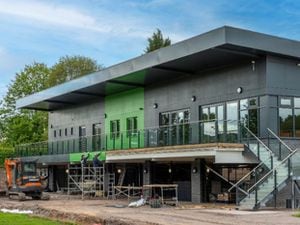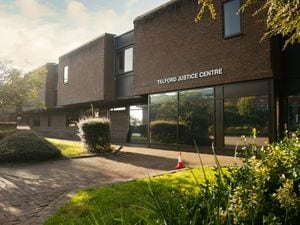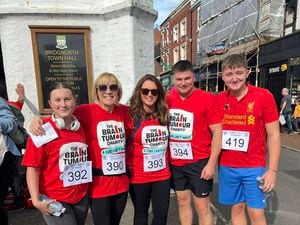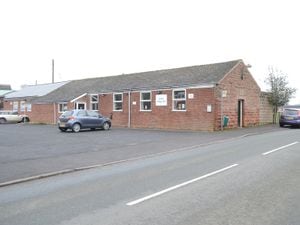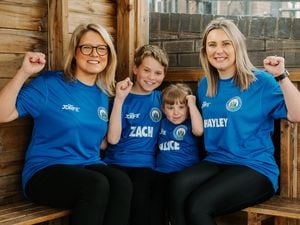Newly found documents suggest deadly WW2 bombing raid on Bridgnorth could have been planned
Target for tonight – Bridgnorth. As the Blitz gathered pace in the summer of 1940, the town suffered its own night of tragedy.
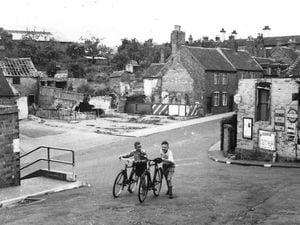
A German bomber unloaded its deadly cargo over the town causing death and destruction, the scars of which are visible to this day.
A random, unplanned attack by a raider using the River Severn to navigate its way home and spotting a target of opportunity?
Bridgnorth local historian and author Clive Gwilt has come across documents which he says raises another possibility – that the town was the target all along.
One is a Nazi aerial reconnaissance photo highlighting the large RAF training camp on Bridgnorth's doorstep, highlighted in red.
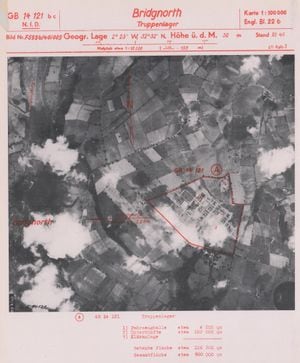
"I came across the Luftwaffe target dossier for Bridgnorth in 1940 while researching my next book, Bridgnorth in World War II," said Clive.
It was, he says, among records seized by the Americans.
"This raises the question of whether, when the bombs dropped on Bridgnorth on August 29, 1940, were they just dumping their load after a raid on Liverpool or was it a proper raid.
"The documents show they had targets in Ditton Priors – probably the arms depot there – Quatford Castle and a place called Forest Oak."
Also highlighted are airfields in the vicinity, at Wolverhampton, at Perton on the outskirts of Wolverhampton, also "Cosford Grange" and Bobbington, more commonly known as Halfpenny Green.
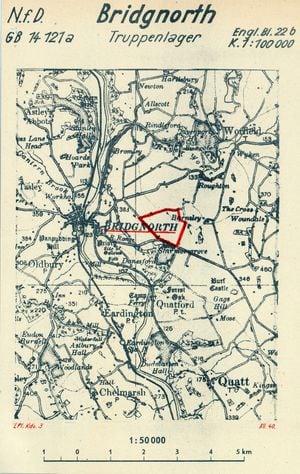
Clive's book is currently at the publishers.
The raid on Bridgnorth saw a string of bombs dropped across the town and left two people dead.
They were Mrs Elizabeth Hand, 68, of 9 Church Street – her husband was severely injured – and Miss Mary Josephine Maynard, 62, of Cliff Cottages.
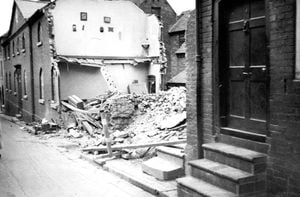
A total of 12 bombs of various types fell at around 1.30am.
Three explosive bombs landed close to St Leonard’s Church. One struck Cliff Cottages occupied by Mrs Maynard and her sister. Another hit the Hands' cottage in Church Street, which was never rebuilt and remains a bomb site to this day, having been turned into a memorial garden after the war.
Other bombs landed at the junction of Pound Street, Listley Street and St Mary's Street severely damaging the Squirrel Hotel and nearby properties.
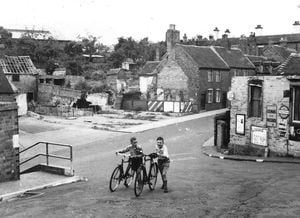
One bomb blew away the front of the hotel, the licensees at the time being Jack and Hilda Ritchie.
Their son Ken recalled the attack in a 2008 interview – he was 74 at that time.
“For about a week beforehand the siren went every night and we went down the cellar. This particular night my dad said ‘We won’t go down the cellar tonight. They’re not going to bomb Bridgnorth.’ But they did.”
He slept in the same room as his mum and dad, at the back of the hotel, which turned out to be fortunate.
“About 1.30am I was wakened by a whistling sound. That was it then. I must have been blown out of bed and hit the wall the other side of the room. The next thing I remember was being carried downstairs by my mum in her arms.
“It blew all of the front of the pub away. All the doors were blown off. There was glass everywhere. My sister Lorna was away on a week’s holiday at the time. All the ceiling fell down in her bedroom on to her bed. She would probably have been killed.
“The Air Raid Precautions rescuers said that if we had gone down the cellar we would have been killed, as the blast went straight through it, blowing off the cellar flaps.”
Ken was unscathed and said his mother had only cut her feet through the broken glass. His father had been out on ARP duty when the bomb struck.
“Two women were killed by direct hits on houses in Church Street and one behind the old St Leonard’s rectory, which is now a dentist. Two or three incendiary bombs fell behind shops in the High Street.
“There were 12 bombs altogether, but the biggest bomb was the one dropped outside The Squirrel, on the junction of St Mary's Street and Listley Street. It made a massive crater.
"It was the biggest bomb they had at that time. We had to go and live at my auntie and uncle’s pub, the Three Horseshoes at Wheathill, while they rebuilt the pub.”
He said that Mr Payne’s sweet shop on the other side of the junction was also blown up by the same bomb.
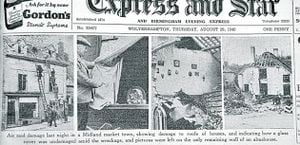
The effects on Ken were to be long lasting.
“Every time an aircraft went over I had to get under the bed. I don’t like hearing one even now.”
The rebuilt Squirrel no longer exists, having been demolished in 1979.
As for RAF Bridgnorth, it was not an airfield but a basic training camp for recruits which had opened on November 6, 1939, and was happily spared the attentions of the Luftwaffe during the war.

